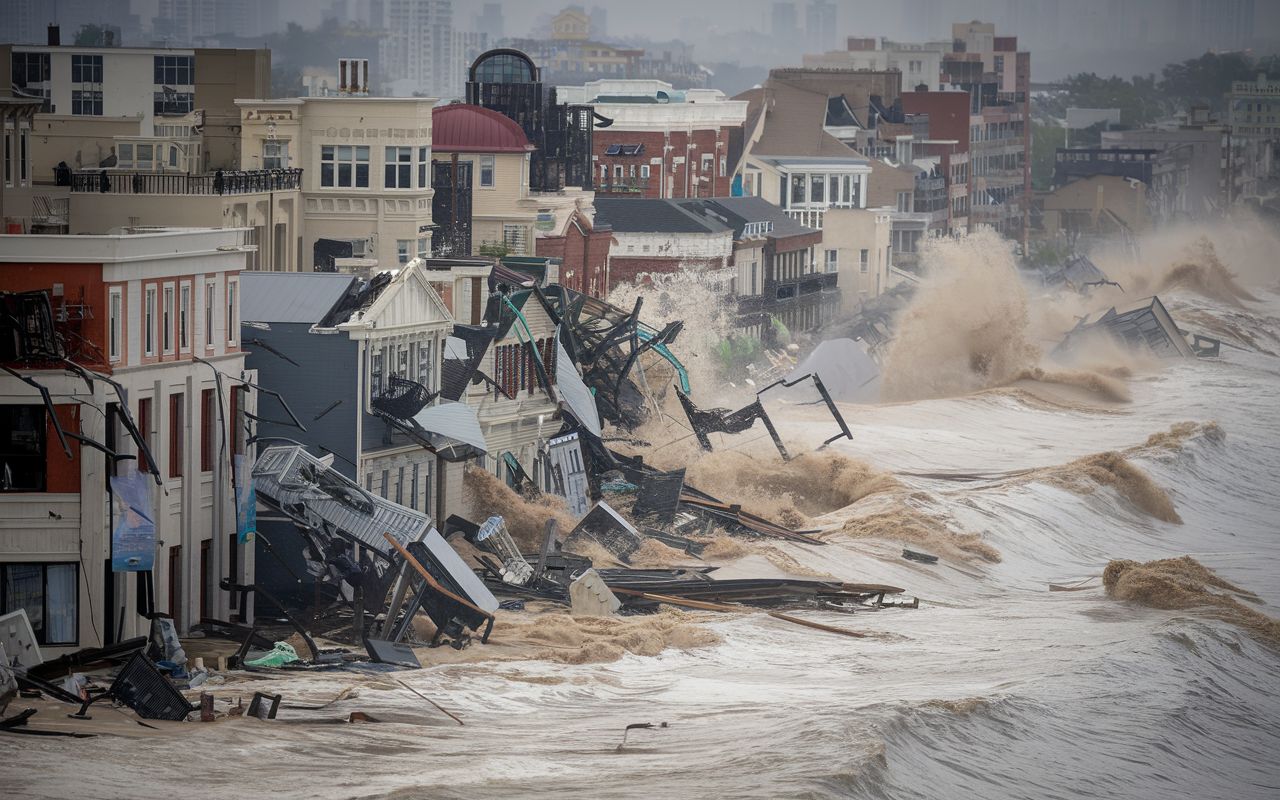Follow us on Google News (click on ☆)
Researchers from the University of Colorado have recently published concerning results. Climate change is amplifying extreme El Niño events. Within 25 years, half of these events could reach unprecedented intensity.

The last El Niño, which occurred in 2023-2024, already showed signs of exceptional strength. These episodes occur when the temperature of the Pacific Ocean exceeds its average by 0.5°C (0.9°F). But it becomes extreme when it surpasses the threshold of 2°C (3.6°F).
Since the 1950s, the NOAA (National Oceanic and Atmospheric Administration) has recorded four extreme El Niño events. Each of these events resulted in devastating consequences, ranging from catastrophic floods to severe droughts, not to mention record-breaking heat waves that impacted various ecosystems.
Human losses are steadily increasing. Economic losses, meanwhile, often reach billions of dollars, affecting millions of people worldwide. With global warming, experts are concerned about the potential for a significant increase in both the frequency and intensity of these El Niño events.
To reconstruct past ocean temperatures, researchers have relied on fossils of marine organisms called foraminifera. These organisms preserve precise clues about Earth's climate evolution in their shells. The computer model used revealed a troubling trend. While extreme events were rare during the Ice Age, their frequency increases alongside rising global temperatures.
The phenomenon hinges on a key mechanism known as the Bjerknes feedback. When the Pacific Ocean warms, the equatorial winds weaken, further enhancing the warming. This vicious cycle could explain the intensification of El Niño.
Scientists are calling for immediate action to limit warming to +1.5°C (2.7°F). Without this, climatic consequences could surpass the adaptive capacities of societies.
What is the Bjerknes feedback?
The Bjerknes feedback is a complex climate mechanism. It occurs when a region of the eastern Pacific Ocean warms, disrupting the dominant winds. These winds, which normally blow from east to west, weaken as the water becomes warmer.
This feedback phenomenon is a vicious cycle. As the winds weaken, the warm water extends eastward. This leads to further warming of the ocean, which in turn weakens the winds even more. This cycle amplifies the intensity of climatic events like El Niño.
This feedback explains why El Niño events are becoming more frequent and extreme with climate change. By disrupting the natural balance of the oceans and atmosphere, the Bjerknes feedback could contribute to more destructive weather events in the future.
How do foraminifera reveal past climates?
Foraminifera are single-celled marine microorganisms that build shells out of calcium carbonate. When these shells fossilize, they hold valuable information about past ocean conditions.
The oxygen isotopes present in their shells vary depending on the temperature of the water in which they lived. By analyzing these isotopic variations, scientists can estimate ocean temperatures at different times.
This technique allows for the reconstruction of climate over tens of thousands of years. Researchers use this data to model past El Niño events and understand how they evolve with global climate changes.
What is the El Niño Southern Oscillation (ENSO)?
The El Niño Southern Oscillation (ENSO) is a climate cycle involving interactions between the ocean and the atmosphere in the Pacific Ocean. This phenomenon is divided into three phases: El Niño, La Niña, and the neutral phase.
- 1. El Niño: This phase is characterized by a warming of the surface waters in the central and eastern Pacific. It causes changes to global weather patterns, leading to extreme events such as droughts or floods.
- 2. La Niña: In contrast to El Niño, La Niña is marked by a cooling of the same waters. It can also cause significant meteorological impacts, often opposite to those of El Niño, such as heavier rains in certain areas and droughts in others.
- 3. Neutral phase: Between these two phases, the climate can stabilize without major disturbances, though atypical conditions may still occur.
ENSO has a significant impact on the global climate, affecting crops, water resources, and even cyclones. Understanding this cycle helps in predicting and managing the impacts of extreme weather events.